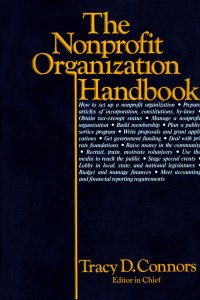Since the Filer Commission
In 1983, Independent Sector sponsored “Since the Filer Commission,” a research forum conducted in New York, ten years after the Commission on Private Philanthropy and Public Needs had concluded its two-year study into private philanthropic initiatives. The Filer Commission had published its report, Giving in America: Toward a Stronger Voluntary Sector, in 1975.
 Sector leaders (including Kathleen D. McCarthy, Pablo Eisenberg, Russy Sumariwalla, Elizabeth T. Boris, Lester Salamon, Jon Van Til, Landrum R. Bolling, and Tracy D. Connors) were asked their opinions regarding: the accuracy of the original commission’s report: about research that had been expanded or continued since the commission had reported 10 years earlier: identification of new issues, new research, or lingering questions still unanswered; and, where did the sector go from that point.
Sector leaders (including Kathleen D. McCarthy, Pablo Eisenberg, Russy Sumariwalla, Elizabeth T. Boris, Lester Salamon, Jon Van Til, Landrum R. Bolling, and Tracy D. Connors) were asked their opinions regarding: the accuracy of the original commission’s report: about research that had been expanded or continued since the commission had reported 10 years earlier: identification of new issues, new research, or lingering questions still unanswered; and, where did the sector go from that point.
Connors had published the first Nonprofit Organization Handbook in 1980. The Nonprofit Organization Handbook established for the first time that regardless of the specific public service provided, not-for-profit organizations shared seven areas of management—from fund raising to volunteer administration.
The first and second editions of the Nonprofit Management Handbook compiled the fundamental management information needed by NPO leaders in one volume for the first time.

The NPOH pointed out for the first time that while not-for-profit organizations may differ greatly in the type and variety of the public services they provide—e.g. culture versus social services—nevertheless, they generally share seven important areas of management and operations.
As Connors pointed out in his IS presentation and published perspectives, nonprofit organizations, regardless of the type of public service they provide, shared basic management commonalities, e.g., leadership, management and control; human resources management; revenue and support generation; financial management; public relations, marketing and communication; organizational and corporate principles; and, legal and regulatory impacts. While nonprofits exhibit major differences in terms of their public services, in management areas they share much more than they differ.
What was emerging he termed a “horizontal view” of management and the nonprofit sector based on a concurrence that nonprofits share at least these seven areas of management and that “mastery of at least these areas is critical for the success of both the professional and NPO manager, and the organization which he or she leads.”
The Nonprofit Manager
A new category of management professional had emerged, he pointed out – the “nonprofit manager” – a professional, paid or volunteer, who has mastered the management basics of voluntary action organizations. At long last the nonprofit sector had the ability “to generate a curriculum designed to train the nonprofit executive – undergraduate and graduate … Enabling us to provide specific professional training in NPO management so badly needed by our career managers.”
At long last the nonprofit sector had the ability “to generate a curriculum designed to train the nonprofit executive – undergraduate and graduate … Enabling us to provide specific professional training in NPO management so badly needed by our career managers.”
The early 1980’s introduced the first comprehensive handbooks for charitable-philanthropic organization management, and established the basic horizontal management model which exists to this day around which management education in this field is organized. A new management professional had evolved to lead C-POs regardless of their public service: the nonprofit executive.
